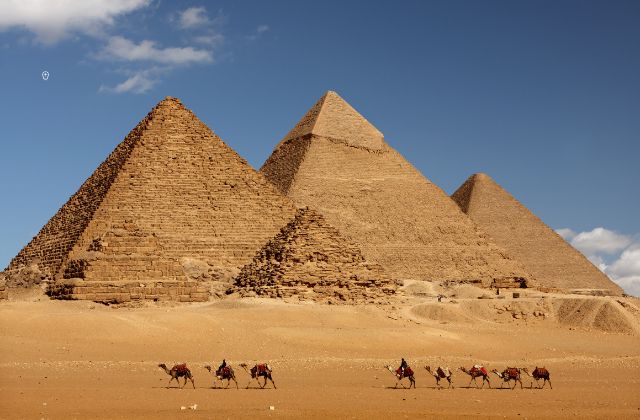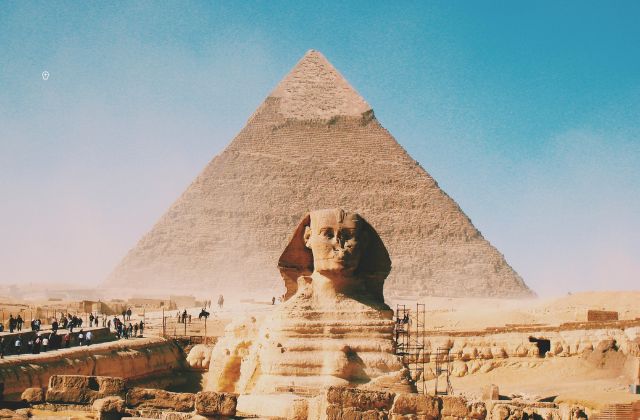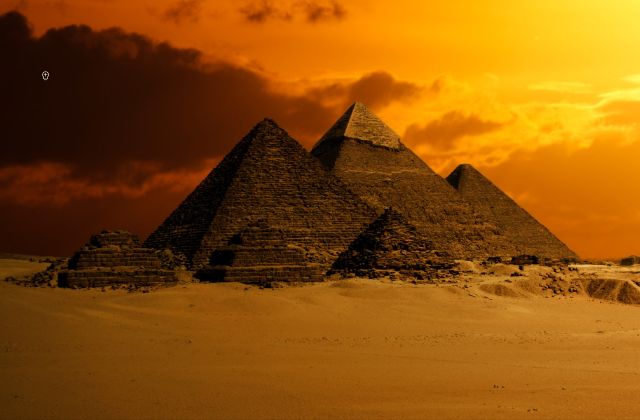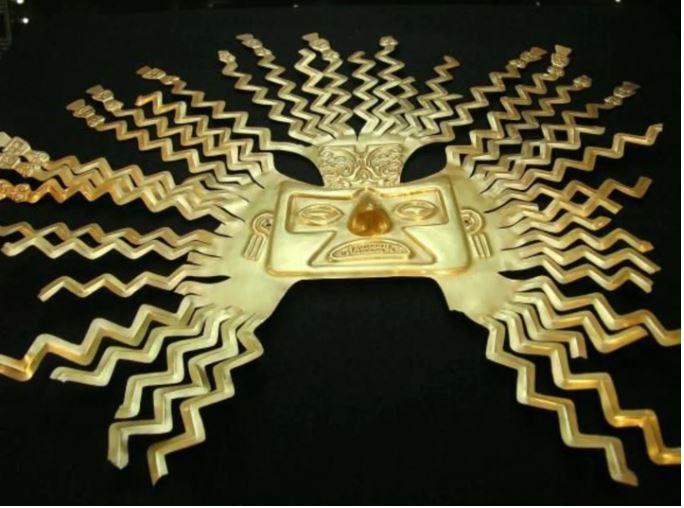10 Interesting Pyramid Facts for Kids, Parents and Teachers (2024)
The ancient Egyptian pyramids are a fascinating way to teach your kids about Egypt’s history and architecture. These ancient pyramids are among the oldest constructions still in existence today. They draw visitors from all over the world. Their gigantic size, form, and legends of pharaohs and mummies have created a slew of questions. It’s an incredible sight and adventure site, with various chambers and secret passages.

You will be amazed and delighted with the interesting pyramid facts for kids that you will find in this article.
Some basic facts about the pyramids:
Name: Egyptian Pyramids
Location: Egypt, Africa-Asia
Total Pyramids: Between 118 and 138
Earliest Pyramid Built: Saqqara (2670 BCE)
Latest Pyramid Built: Taharqa (664 BCE)
Significance: Architectural abilities of ancient Egyptians
Here are some interesting facts about the pyramids:
1. The pyramids were, at one point, the highest constructions ever created by humans.

Most historians believe that the Great Pyramid of Giza, also known as the Pyramid of Khufu, was constructed between roughly 2,550 and 2,490 B.C. The tower was exceedingly immense, and it retained the record for the highest human-made construction for many centuries until Lincoln Cathedral (with its original spire) was erected in 1311 AD.
This is a great accomplishment, especially given the ancient Egyptians’ limited understanding of construction and engineering. Even today, building such a structure would be a massive engineering accomplishment.
2. Most of the pyramids were constructed of limestone, except for The Great Pyramid, which was constructed of granite.

Originally, pyramids were made completely of stone. The inner body of these pyramids was composed of locally mined limestone, while the outer casing was made of a higher grade limestone acquired near modern Cairo. The pyramids’ façade was finished with limestone to give it a smooth, polished appearance that allowed it to reflect sunlight.
The topmost layer was destroyed because the pyramid’s outer casing was stripped of stone and used in other constructions throughout time. The stepped core stone, which is a rougher limestone than that utilized for the outer casing, is what we see today in the pyramids.
3. The temperature inside the Pyramids remains constant. It is equal to the average global temperature of 20°C.
Temperatures within the pyramids remain steady at 20 degrees Celsius no matter how hot it gets outside. This is pretty remarkable, given that Egypt experiences extremely high temperatures. No one has yet figured out how this steady temperature was and is maintained.
4. The pyramids were much more than just tombs.
They were also intended to spiritually accompany the deceased into the afterlife. The Egyptians thought that when the pharaohs died, they became gods. The pyramids were built to aid the Pharaoh on his journey to the afterlife. The sphinx was erected at the entrance to the pyramids to guard the deceased against psychic assaults.
5. Pyramids were constructed for religious reasons because the Egyptians were among the first to believe in an afterlife.
Egypt’s pharaohs intended to become gods after death. They built temples to the gods and gigantic pyramid tombs for themselves, loaded with everything a monarch would need to lead and support himself in the next world.
Giza was chosen as the site for the pyramids of giza because it was on the Nile’s west bank. This implies that it is both the setting sun’s country and the dead’s land in Egyptian mythology.
6. Egyptians placed prized objects like gold, jewelry, and pottery within the pyramid, as well as sculptures of the Pharaoh.

The pyramids have underground rooms, including the King’s chamber, which serves as the Pharaoh’s burial chamber. These rooms would be packed with riches and ordinary objects for the Pharaoh, which they believed he would take with him on his journey to the afterlife.
There are chambers beside the Pharaoh’s chamber where the Pharaoh’s family and servants are buried. Other chambers in the Pyramid complex may have been utilized as temples to offer prayers, as well as bigger spaces for storage.
7. The pyramids have survived attempts to tear them down.
Sultan Al-Aziz Uthman, son of Saladin and ruler of Egypt in the 12th century, planned to destroy the Giza pyramids, beginning with the Menkaure pyramid. His staff had made very little progress in the pyramids of giza after eight months and a lot of money, and he was compelled to quit.
This grand-vandalism attempt, however, left a massive gash on one side of Menkaure’s pyramid from the Giza pyramids.
8. Not every pyramid was pointed.
While the Giza pyramids are the most famous, Egypt contains many more gorgeous pyramids, such as the “stepped pyramids.”
In fact, one of the oldest Egyptian pyramids, believed to have been erected around 4,700 years ago, may have been uncovered in Saqqara. This Egyptian Pyramid was constructed as Djoser’s tomb, and features raised sides and a flat top.
Tombs were initially constructed as mastabas, which were lower, flat-roofed structures with sloping sides. Djoser’s pyramid is thought to have started as a mastaba and then grew to become the 197-foot (60-meter) step pyramid we see presently for unexplained reasons.
9. The pyramids sometimes seem to be pointing to the stars.

The Big Dipper and the Little Dipper appear to have been employed by the Ancient World Egyptians to position their pyramids in a north-south direction. This alignment is so exact that their north-south locations are within 0.05 degrees of precision. However, it is crucial to remember that star alignment is constantly changing, albeit at a prolonged rate.
10. Egypt really has more than 100 pyramids.
How many Egyptian Pyramids spring to mind when you think about Egypt? 5? 10? In fact, some estimate that there are more than 130, give or take.
Furthermore, many experts anticipate that more will be discovered in the future years. The rationale for so many being built is fiercely discussed, but it is obvious that they played a significant part in Ancient Egyptian civilization.
Conclusion
The facts above provide great insights and information about the ancient Egyptian pyramids, one of the world’s seven wonders monuments. We hope you liked reading about it. For more such informational facts, visit our website!
